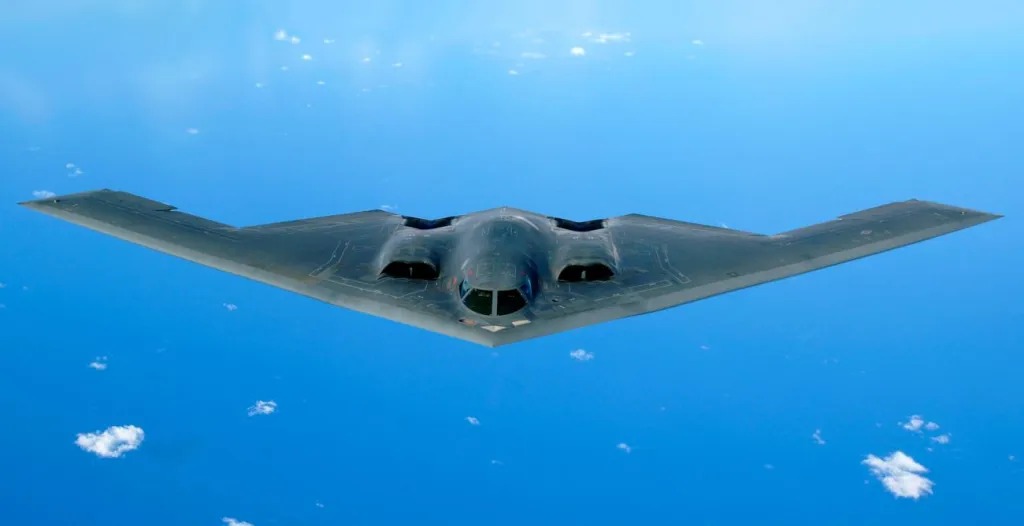The Iran-Israel war has entered its sixth day. Israel has achieved complete air superiority over the skies of the Islamic Republic. The top Iranian military leadership has been eliminated. Most of the Iranian air defense systems have been bombed, and Iranian nuclear sites have been hit.
However, Israel cannot completely knock out Iran’s nuclear program. Not without the US help.
The International Atomic Energy Agency (IAEA) has reported no damage at Fordow, one of Iran’s main uranium enrichment plants south of Tehran, and satellite imagery has revealed minimal damage at Iran’s other nuclear sites, such as Natanz and Isfahan.
In the aftermath of the strikes, Netanyahu said, Israel’s operation struck at the “heart of Iran’s nuclear enrichment programme.” He emphasized that Israel’s strikes on Iranian infrastructure had set its nuclear program back by years.
However, despite these self-congratulatory messages, Israel does not have the capability to eliminate Iran’s nuclear program. Specifically, Israel can not hit Iran’s Fordow nuclear plant without US help.
Iran’s Impregnable Fortress: Fordow Nuclear Plant
The Fordow nuclear plant is Iran’s most heavily fortified nuclear site. It is buried deep inside a mountain to protect it from an attack.
Defense analysts believe that Israel can not destroy Fordow on its own. However, attacking Fordow is central to any effort to destroy Iran’s ability to make nuclear weapons. In March 2023, the IAEA reported that it had discovered uranium that had been enriched to 83.7 % purity in Fordow, close to the enrichment level, 90%, necessary for nuclear weapons.
Iran built the Fordow nuclear plant considering the possibility of an attack on it. The Fordow nuclear plant was built more than two decades after Israel attacked Iraq’s nuclear reactors in 1981.
Construction is believed to have begun around 2006, and the facility became operational in 2009, the same year Tehran publicly acknowledged its existence. The plant is buried nearly 80 meters (260 feet) under rock and soil. Therefore, it can not be destroyed by regular bombs or missiles.
Israel Needs American Help?
A powerful American bunker-busting bomb is the only weapon capable of destroying Iran’s deeply buried nuclear facility, Fordow, making it President Donald Trump’s weapon of choice if he chooses to militarily back Israel.
The GBU-57, a 30,000-pound (13,607 kg) warhead capable of penetrating 200 feet (61 meters) underground before exploding, is missing from Israel’s arsenal despite its stated goal of preventing Iran from building a nuclear bomb.
Why GBU-57 Bomb?
In less than a week, the Israeli army has taken out Iranian military commanders and damaged numerous surface installations, raising more questions than answers.
“The regime’s missile stockpiles, launchers, military bases, production facilities, nuclear scientists, military command and control has taken a very severe beating,” said Behnam Ben Taleblu, director of the Iran program at the Washington-based think tank Foundation for Defense of Democracies (FDD), a conservative-leaning group.
“But there are still outsized questions as to how efficacious of a strike Israel had against the beating hearts of Iran’s nuclear program,” Taleblu said.
“All eyes will be on Fordo, which is buried under about 300 feet of rock in central Iran,” Taleblu said.
Former US Army lieutenant general and Rand Corporation defense researcher Mark Schwartz insists that “only the United States has the conventional capacity” to destroy such a site.
And by “conventional capacity,” he means the non-nuclear GBU-57 bomb.
GBU-57: What Are Its Capabilities?
The US military says the GBU-57 — also named Massive Ordnance Penetrator — “is designed to penetrate up to 200 feet underground before exploding,” navigating through rock and concrete.
This differs from missiles or bombs that typically detonate their payload near or upon impact.
“To defeat these deeply buried targets, these weapons need to be designed with rather thick casings of steel, hardened steel, to sort of punch through these layers of rock,” said Masao Dahlgren, a fellow working on missile defense for the Center for Strategic and International Studies (CSIS), a Washington-based research center.
The 6.6-meter-long GBU-57 also has a specialized fuse because “you need an explosive that’s not going to immediately explode under that much shock and pressure,” Dahlgren said.
Design for this bomb began in the early 2000s, and an order for 20 units was placed with Boeing in 2009.
How Is It Deployed?
The only aircraft capable of deploying the GBU-57 is an American B-2 Bomber, a stealth aircraft.
Some of these bombers were deployed in early May on Diego Garcia, the site of a joint UK-US military base in the Indian Ocean, but were no longer visible by mid-June, according to analysis of satellite imagery provided by Planet Labs.
With their long-range capabilities, B-2s departing from the United States “are able to fly all the way to the Middle East to do bombing runs. That’s been done before,” Dahlgren said.
Each B-2 can carry two GBU-57 bombs, and Schwartz said multiple bombs will likely be needed. “They’re not going to just be one and done,” he said.
Schwartz added that the air superiority Israel has established over Iran reduces the risks faced by the B-2 bombers.

Notably, the B-2 bombers are nearly 36 years old. On July 17, 1989, the B-2 Spirit completed its maiden flight, ushering in a new era of strategic deterrence.
The B-2 Spirit is one of the three strategic bombers used by the USAF. Designed for covert nuclear and conventional strikes, it has expanded its mission to include traditional precision attacks, even though it was originally designed for the Soviet air defense network and a possible nuclear attack.
Thirty-six years on, the Spirit is still the bedrock of the air component of the US nuclear triad and can soon be used to bomb Iran’s best-protected nuclear site.
What Are The Consequences?
Such a US intervention would come with “a lot of political baggage for America,” Taleblu said, emphasizing that the bunker-buster bomb is not the only way to address Iran’s nuclear program.
Without the GBU-57 bombs, and short of a diplomatic solution, Taleblu said Israelis could attack access to underground complexes like Fordow by “trying to hit entrances, collapse what they can, cut electricity,” and take other measures that have already been taken at Natanz.
Gen. Joseph Votel, who was the commander of the U.S. Central Command during Trump’s first term, said that a decision to use the American bunker busters would also have enormous international consequences.
“For one, there could be nuclear contamination from such a bombardment that could endanger civilians,” Gen. Votel told the New York Times.
“I think there would also certainly be fallout internationally over the idea that the United States joined Israel in what would be viewed as an illegal attack on the sovereignty of Iran,” he added.
It remains to be seen whether the US will get involved in the war and use B-2 stealth bombers and GBU-57 bunker buster bombs to attack Iran’s Fordow nuclear plant. For now, Tehran has rejected Trump’s proposal to negotiate.
Iran will not negotiate or accept peace “under duress,” the Iranian mission to the United Nations said on X in response to Trump’s comments over the past few days.
“The only thing more despicable than his lies is his cowardly threat to ‘take out’ Iran’s Supreme Leader,” the mission said, referencing Trump’s post on Truth Social in which he called Ayatollah Ali Khamenei an “easy target.”
“Iran does NOT negotiate under duress, shall NOT accept peace under duress, and certainly NOT with a has-been warmonger clinging to relevance. Iran shall respond to any threat with a counter-threat, and to any action with reciprocal measures,” according to the post.



